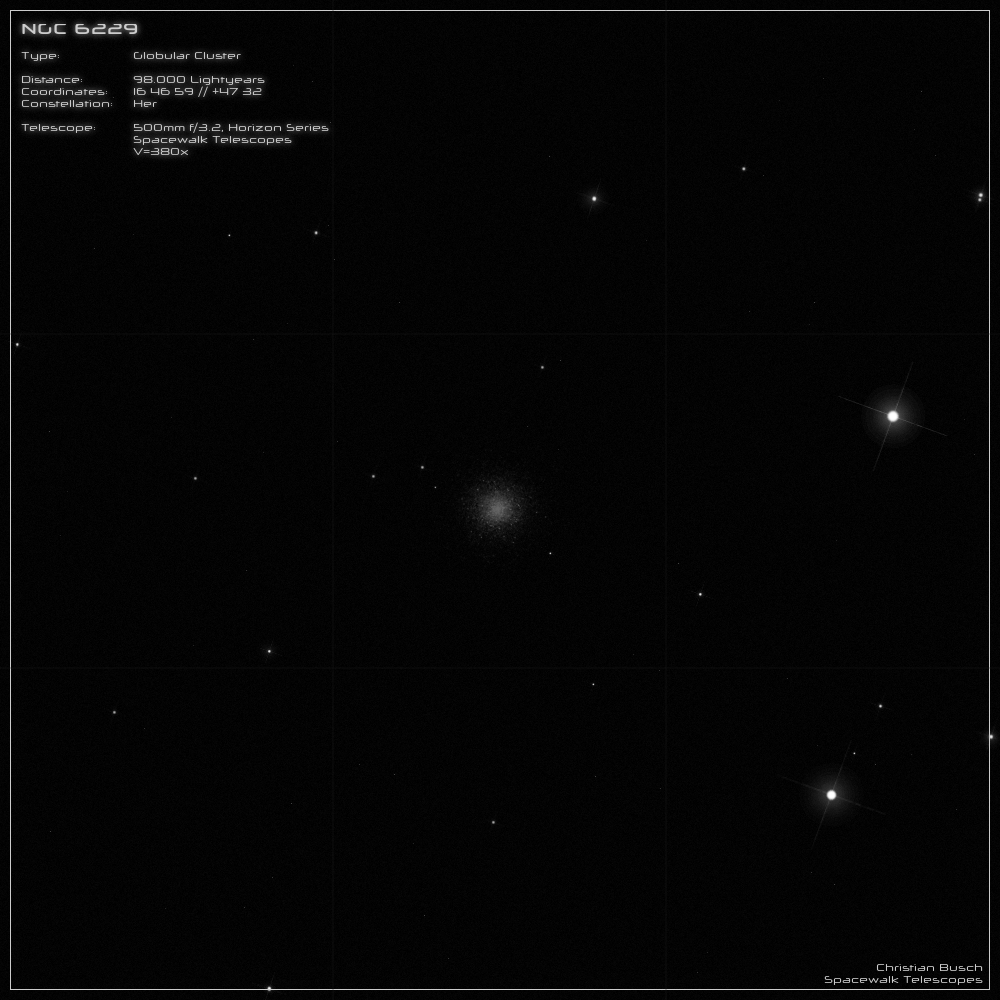NGC 6229 - globular cluster
The globular cluster NGC 6229 is located in the constellation Hercules at a distance of 98,000 light-years. It has an apparent magnitude of 9.3mag and an
extent of 4.5' (arcminutes). The object was discovered in May 1787 by F.W. Herschel, who at first thought it to be a planetary nebula. It was not until the
middle of the 19th century that Heinrich Louis d'Arrest recognized its true nature.
The diameter of the globular cluster is 125 light-years with a total mass of 200,000 solar masses. Half of its mass is inside a sphere with a diameter of only 30
light-years. So the stellar density in the innermost region is immensely high. The absolute magnitude of NGC 6229 is given as M= -8.1mag, which
corresponds to a luminosity of 149,000 suns. Investigations of the metallicity have shown that two different generations of stars are present.
It is also discussed if the globular cluster is not in fact the leftover core of a dwarf galaxy.
----------------------------------------------------------------------------------------------------------------------------------------------
In my 20" telescope NGC 6229 appears quite bright at a magnification of 120x and is easy to detect. However, no single stars are visible, more than a diffuse
ball, which becomes moderately brighter towards the center, is not visible.
Things get interesting at a magnification of 380x. Now the outer regions as well as the core are resolved into a multitude of extremely faint stars, which seem
to have a brightness of less than 16mag. In this respect, it takes a dark sky, very steady air, and sufficient aperture to unravel the true nature of NGC 6229.
The globular cluster forms a nice triangle with two very bright stars that provide a nice contrast.

